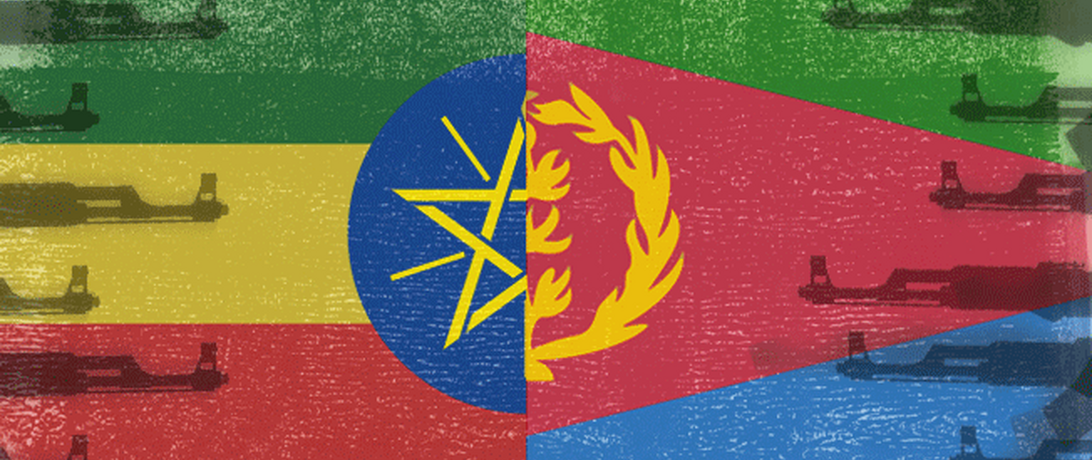
Ethiopian and Eritrean governments have finally agreed to settle their two decade old border dispute that has led to the deaths of over 80,000 people
The Horn of Africa has drawn renewed international attention as the Ethiopian and Eritrean governments have finally agreed to settle their long-standing border dispute. While somewhat forgotten by modern observers, this two-decade-old dispute has led to the deaths of over 80,000 people. Though a settlement was reached in 2000 between the two countries, Ethiopia has long been the holdout, refusing to ratify the agreement. The dispute was a surprising departure for these two countries as the governments of both states fought (cooperating often) in the same civil war to overthrow the Derg government in 1991, when Eritrea was still part of Ethiopia. The turning point in this seemingly intractable conflict has been the rise of Ethiopia’s new prime minister, Abiy Ahmed. Africa’s youngest head of state (only 41 years old) has shocked both the Ethiopian people and international observers by instituting an about-face on the Ethiopian People’s Revolutionary Democratic Front (EPRDF) policy of intransigence in the border dispute. The emergence of Prime Minister Ahmed and the apparent end to the rivalrous relationship between Ethiopia and Eritrea spark numerous questions. Chief among them is what role new leaders play in ending intractable interstate disputes. Furthermore, how will this resolution affect the political survival of Ethiopia’s reformist prime minister? While much of the academic work on this subject suggests that new leaders and significant institutional reforms often help to end interstate rivalries, leaders may pay a significant cost for agreeing to these settlements. By ending this dispute, Ethiopia’s new prime minister is accepting a dangerous gamble.
For the past 20 years, Ethiopia has been locked in a protracted interstate rivalry with Eritrea. Though there may be many definitions for rivalrous relationships, William Thompson notes that this international phenomenon is characterized largely by long periods of time during which two states maintain atypical, and consistent, hostility toward one another. One might easily think of the contentious relationship between the USSR and the United States or the ongoing dispute between India and Pakistan as recognizable examples of interstate rivalries. And as with these examples, strategic rivalries between governments often result in overt and covert attempts to undermine the interests of international adversaries, typically leading to armed conflict.
Given the costly (and dangerous) nature of these intractable relationships, there has been significant scholarly focus on what factors may assist in ending such conflicts. As with Ethiopia’s recent experience, past research has underscored the importance of new leadership and institutional reforms in ending these prolonged disputes. Ruling elites often mobilize domestic support around the perceived threat of their international rival. This allows vested interests, such as the armed forces of rivalrous states, to gain a greater share of state resources and insulates their role within the government. These elites, therefore, have a stake in maintaining the rivalry, which makes it difficult for any leader to seek a peaceful resolution to these intractable disputes. New leaders who are unattached to these same vested interests are in a better position to seek an end to interstate rivalries. This is especially true following significant regime change, where leaders may rely on a constituency that may wish to see an end to the dispute.
Even new leaders, though, face some risk by ending interstate rivalries. As noted earlier, rivalries often endure because elites tend to mobilize domestic support based on the external threat posed by the rivalry. Leaders are thus very cautious about agreeing to settlements given their concern that it may draw domestic backlash. Kyle Beardsley notes that, given this concern, leaders often seek out international mediation by foreign governments in intractable disputes as political cover for a potentially unpopular concession. Research by Scott Wolford as well as by Michael Colaresi underscores that concessions made by elites to end these disputes significantly increase the risk that leaders will be removed from office. Recent work by Bryan Rooney suggests that leaders seeking to end rivalries often do so following a major change in the groups that control the government as opposed to leadership changes that preserve the status quo.
These findings suggest that Prime Minister Ahmed, though committed to ending the dispute, may face some key domestic opposition to his decision to terminate the rivalry. This may explain, in part, why three days after a peace delegation from Eritrea visited Ethiopia, a grenade was thrown at the prime minister at a rally. Ahmed is also at a disadvantage given that his rise to power was through the dominant EPRDF that has ruled Ethiopia since the overthrow of the Derg government, suggesting that his tenure may depend heavily on individuals who benefited from the maintenance of the dispute with Eritrea. If Ahmed can continue to support democratic reforms, though, he may be able to insulate himself from the political blowback that results from the end of the rivalry. These reforms would follow the broader global trend, identified by One Earth Future’s REIGN Dataset, of an increase in democratic regimes in the international system.
Article Details
Published
Topic
Program
Content Type
Opinion & Insights